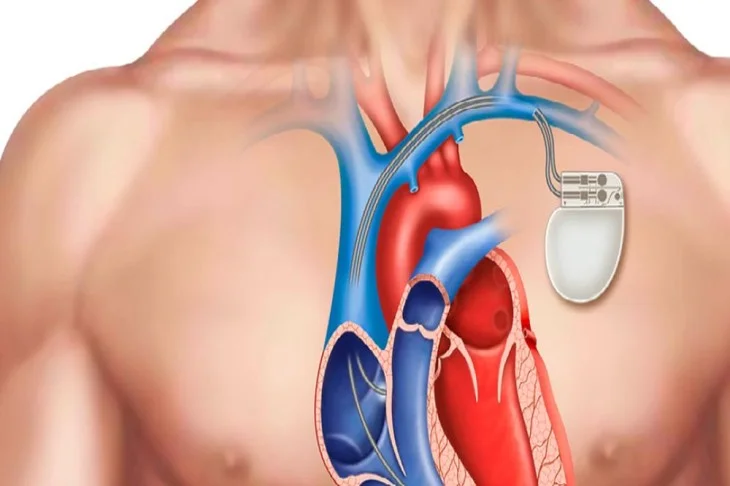Pacemaker Implantation
A pacemaker is a small, battery-operated medical device that helps your heart beat at a regular rhythm and adequate rate. It is placed just beneath the skin, usually near the collarbone, and connected to the heart through thin wires (leads). The device continuously monitors the heartbeat and delivers tiny electrical impulses whenever the heart beats too slowly or irregularly.
🔹 How the procedure is done
Performed under local anesthesia with mild sedation.
A small incision is made below the collarbone.
Leads (wires) are guided through a vein into the heart chambers.
The pacemaker is connected to the leads and implanted under the skin.
The system is tested to ensure it works correctly before closing the incision.
Most patients can go home within 24–48 hours.
🔹 Types of Pacemakers
Single-chamber pacemaker – stimulates one heart chamber (usually right ventricle).
Dual-chamber pacemaker – coordinates the activity of the right atrium and right ventricle.
Biventricular pacemaker (CRT) – used in certain heart failure patients to improve heart pumping efficiency.
🔹 When it is recommended
Bradycardia (slow heart rate) causing dizziness, fatigue, or fainting spells.
Heart block, where electrical signals between the upper and lower chambers are delayed or blocked.
Some cases of advanced heart failure, where cardiac resynchronization therapy (CRT) pacemakers are needed.
Patients who develop dangerous rhythm disturbances after heart surgery or heart attacks.

Benefits of Pacemaker Implantation
Restores and maintains a normal heart rhythm.
Prevents fainting, extreme tiredness, and shortness of breath.
Improves exercise tolerance and quality of life.
Allows patients to lead a more active, independent, and healthier lifestyle.
Increases survival in selected patients with heart failure and rhythm disorders.
👉 Pacemaker Implantation is a safe, reliable, and life-enhancing therapy that offers long-term relief and confidence to patients living with rhythm problems.
